| View previous topic :: View next topic |
| Author |
Message |
alex ph

Joined: 16 Mar 2013
Posts: 1674
|
 Posted: Mon Jul 29, 2019 6:22 pm Post subject: Kodak Printing Ektar with and without the inner disk Posted: Mon Jul 29, 2019 6:22 pm Post subject: Kodak Printing Ektar with and without the inner disk |
 |
|
alex ph wrote:
Kodak printing and enlarging Ektars are often praised for their sharpness. Many of them are not equipped with adjustable aperture and only have an inner metallic disk that serves as fixed aperture. This way the "real" speed of the lens is limited in the sake of better sharpness and contrast. I am always curious which kind of added value a suppression of those fixed stoppers might bring.
I already experimented with a tiny rarer version of highly common Kodak Enlarging Ektar 4.5/50 (London) which does not have an adjustable aperture but such an inner disk. This one was a Heliar type lens. And I was quite curious to see the difference with and without the disk, but did not manage to open the lens.
I got recently a more classic Kodak Printing Ektar 4.5/96 which must have a four glass design, while a Camerapedia page mistakenly attributes Heliar type to the whole Ektar range.
This lens is easy to disassemble, so I made an experiment to explore a possible gain.
After realizing a short series of test shots, I made four quick conclusions:
a) Overall sharpness predictably drops down when the inner disk is retreated.
b) Corners quite predictably degraded without the inner disk.
c) But... colours get warmer and more natural. Even if CA are more visible (slight purple fringing).
d) And shiny surfaces have a much smoother transition to shadow without the inner disk (see #2).
The last two points make me think the lens was still optimized for BW prints, where sensitively cooling the colours and making reflective surfaces shinier was less critical than sharpness.
#1 The test view taken with the inner disk followed by a direct comparison with and without the disk

#2 A 100% crop from the center of the image

#3 A 100% crop from a corner

#4 A 100% crop from the next shot centered and focused on the tree, auto-contrast is applied to lighten the leaves

#5 Another, closer test view
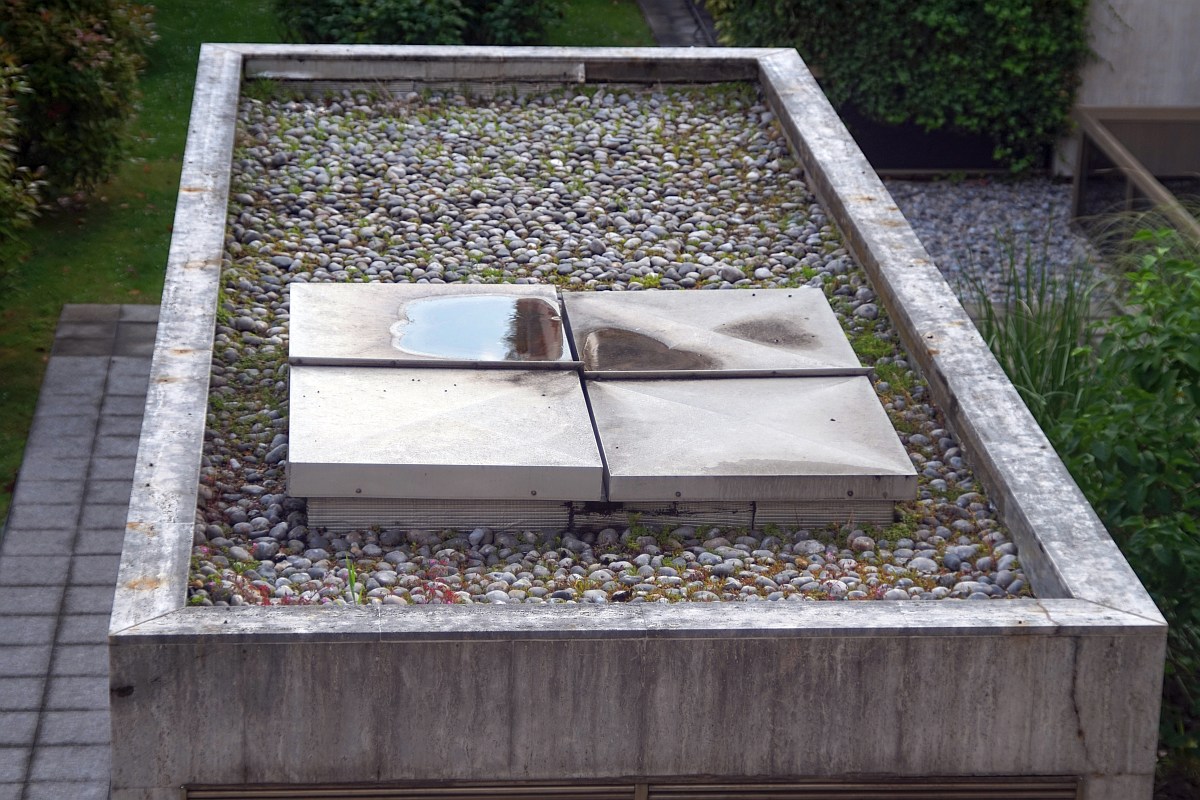
#6 A 100% crop from it
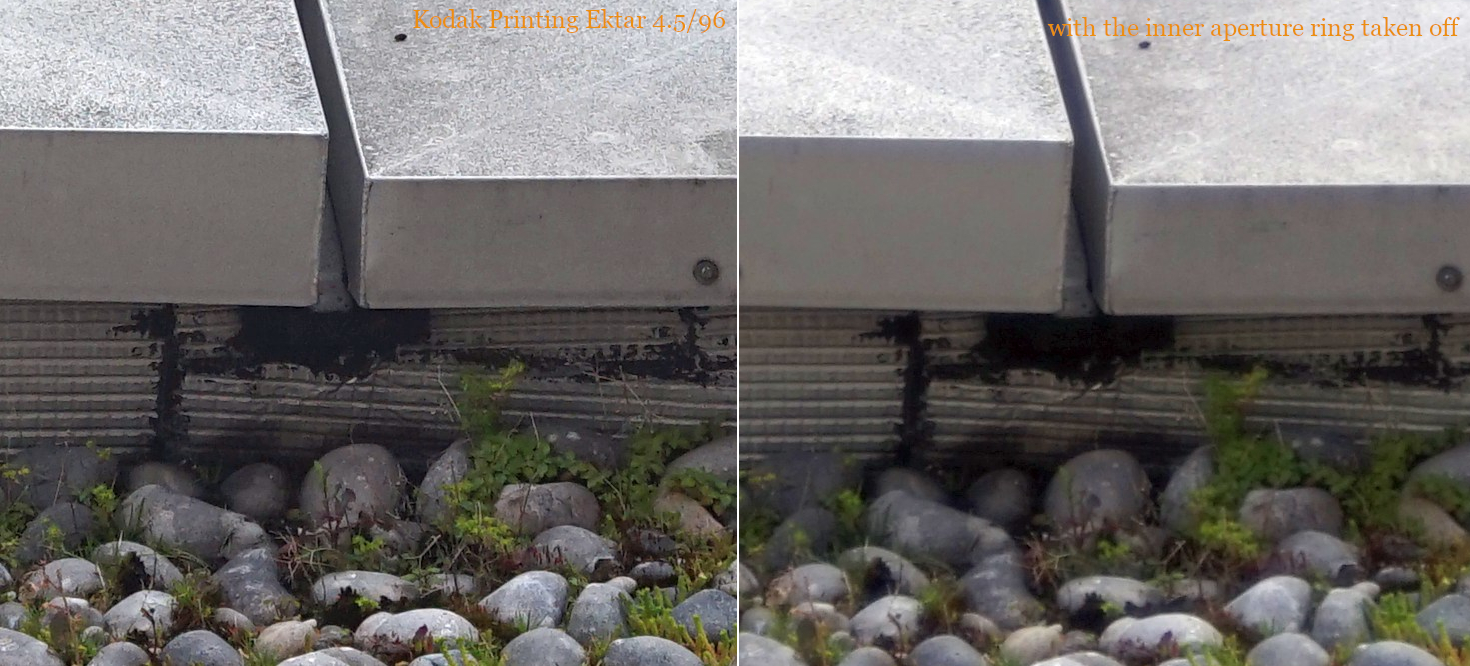
#7 A 100% crop from the lens without the inner disk. Unfortunately, the same scene with it got fuzzy handheld, so no good reason to include both
 |
|
| Back to top |
|
 |
sergtum

Joined: 14 Nov 2016
Posts: 735
|
 Posted: Mon Jul 29, 2019 6:45 pm Post subject: Posted: Mon Jul 29, 2019 6:45 pm Post subject: |
 |
|
sergtum wrote:
 |
|
| Back to top |
|
 |
Blazer0ne

Joined: 12 Sep 2018
Posts: 836
Expire: 2024-12-07
|
 Posted: Mon Jul 29, 2019 8:37 pm Post subject: Posted: Mon Jul 29, 2019 8:37 pm Post subject: |
 |
|
Blazer0ne wrote:
...
Last edited by Blazer0ne on Tue Feb 22, 2022 6:25 pm; edited 1 time in total |
|
| Back to top |
|
 |
alex ph

Joined: 16 Mar 2013
Posts: 1674
|
 Posted: Mon Jul 29, 2019 9:02 pm Post subject: Posted: Mon Jul 29, 2019 9:02 pm Post subject: |
 |
|
alex ph wrote:
Sergtum, Blazer0ne, glad you find that interesting.
Blazer0ne, I won't have the lens in my hands a couple of weeks more. In a "normal" assembly you find this lens and its closest relatives looking like that:
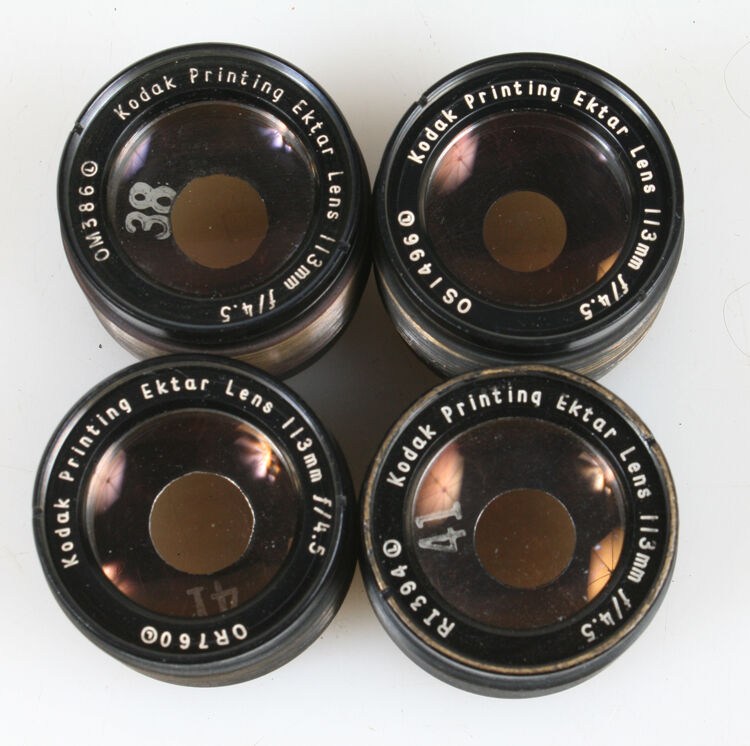
I borrowed this shot from a random ebay listing.
I could easily unscrew the front group and gett off the inner disk. Mine has a mark "44", while those ones on the ebay "38" and "41". Mine has just a larger hole. And that's now, looking at them, I start asking myself if those disks are really fixed "by design" or they are indeed simple and exchangeable drop-in apertures! If it is the case, then the "real" speed of those Ektars is f4.5 without any disk, and we find them second hand "closed", with an aperture disk that was the latest stop used.
That makes me feel stupid, I am pretty sure someone already explained all that in some post. |
|
| Back to top |
|
 |
Blazer0ne

Joined: 12 Sep 2018
Posts: 836
Expire: 2024-12-07
|
 Posted: Mon Jul 29, 2019 10:09 pm Post subject: Posted: Mon Jul 29, 2019 10:09 pm Post subject: |
 |
|
Blazer0ne wrote:
...
Last edited by Blazer0ne on Tue Feb 22, 2022 6:21 pm; edited 1 time in total |
|
| Back to top |
|
 |
alex ph

Joined: 16 Mar 2013
Posts: 1674
|
 Posted: Mon Jul 29, 2019 10:12 pm Post subject: Posted: Mon Jul 29, 2019 10:12 pm Post subject: |
 |
|
alex ph wrote:
Thank you for your kind words! |
|
| Back to top |
|
 |
blotafton


Joined: 08 Aug 2013
Posts: 1633
Location: Sweden
|
 Posted: Mon Jul 29, 2019 10:30 pm Post subject: Posted: Mon Jul 29, 2019 10:30 pm Post subject: |
 |
|
blotafton wrote:
Interesting lenses, are they yellow from thorium or is it just the light that makes it look that way? |
|
| Back to top |
|
 |
alex ph

Joined: 16 Mar 2013
Posts: 1674
|
 Posted: Mon Jul 29, 2019 10:35 pm Post subject: Posted: Mon Jul 29, 2019 10:35 pm Post subject: |
 |
|
alex ph wrote:
Mine is a bit yellow, not as strong as depicted in that shot. |
|
| Back to top |
|
 |
Ernst Dinkla

Joined: 30 Nov 2016
Posts: 408
|
 Posted: Tue Jul 30, 2019 1:17 pm Post subject: Posted: Tue Jul 30, 2019 1:17 pm Post subject: |
 |
|
Ernst Dinkla wrote:
| alex ph wrote: |
Sergtum, Blazer0ne, glad you find that interesting.
Blazer0ne, I won't have the lens in my hands a couple of weeks more. In a "normal" assembly you find this lens and its closest relatives looking like that:

I borrowed this shot from a random ebay listing.
I could easily unscrew the front group and gett off the inner disk. Mine has a mark "44", while those ones on the ebay "38" and "41". Mine has just a larger hole. And that's now, looking at them, I start asking myself if those disks are really fixed "by design" or they are indeed simple and exchangeable drop-in apertures! If it is the case, then the "real" speed of those Ektars is f4.5 without any disk, and we find them second hand "closed", with an aperture disk that was the latest stop used.
That makes me feel stupid, I am pretty sure someone already explained all that in some post. |
That (vintage) lenses get warmer when opened up is quite common, I would not make assumptions on Color vs B&W.
Given the sample photo's of the four 113's the manufacturing indicated by the the first two characters (around 1960) put them in the likely thoriated lens category, Kodak lenses even more than other brands. If so a UV treatment can help to improve the image quality. The 96 4.5 is in the list here: https://camerapedia.fandom.com/wiki/Radioactive_lenses
However the reproduction ratio they were designed for was probably 1:4 or similar. Not optimal in a test like shown.
Met vriendelijke groeten, Ernst Dinkla
_________________
Met vriendelijke groet, Ernst
http://www.pigment-print.com/spectralplots/spectrumviz_1.htm
March 2017 update, 750+ inkjet media white spectral plots |
|
| Back to top |
|
 |
alex ph

Joined: 16 Mar 2013
Posts: 1674
|
 Posted: Tue Jul 30, 2019 7:22 pm Post subject: Posted: Tue Jul 30, 2019 7:22 pm Post subject: |
 |
|
alex ph wrote:
Thank you for this additional info and for the precaution. I won't bring the lens in my pocket !  As far as I understand, the radioactive impact of such lenses is really minor in usual photography practice. As far as I understand, the radioactive impact of such lenses is really minor in usual photography practice.
To my surprise, I found nothing specific about the habitual use of aperture disks in Printing Ektars. Well, the original intent of this post turned out finally not be that naive. |
|
| Back to top |
|
 |
Ernst Dinkla

Joined: 30 Nov 2016
Posts: 408
|
 Posted: Wed Jul 31, 2019 11:37 am Post subject: Posted: Wed Jul 31, 2019 11:37 am Post subject: |
 |
|
Ernst Dinkla wrote:
| alex ph wrote: |
Thank you for this additional info and for the precaution. I won't bring the lens in my pocket !  As far as I understand, the radioactive impact of such lenses is really minor in usual photography practice. As far as I understand, the radioactive impact of such lenses is really minor in usual photography practice.
To my surprise, I found nothing specific about the habitual use of aperture disks in Printing Ektars. Well, the original intent of this post turned out finally not be that naive. |
It is not the radioactivity I worry about but the fact that the optical properties of that kind of lenses deteriorate over time by the decay. Changes in the glass itself happen, not just the discoloring. Both can be cured to an extent with UV treatment.
I guess the choice of aperture discs depends on the use of the lens. If speed of the process is more important than image quality a wider opening will be used. That can also relate to the intended magnification factor of the device it is used in. Small differences in the disk openings could be an indication of calibration purposes for the disks. Although I think it is easier to calibrate on the illumination source in the equipment.
Your test shows enlarged crops of the image. I guess you made more images, each one focused per plane of the crop. Made for flat field, the lens may have some curvature at longer distances but not that much to create the same resolution at the building and tree at the edges as it did on the roof in the upper center.
Met vriendelijke groet, Ernst Dinkla
_________________
Met vriendelijke groet, Ernst
http://www.pigment-print.com/spectralplots/spectrumviz_1.htm
March 2017 update, 750+ inkjet media white spectral plots |
|
| Back to top |
|
 |
Sciolist


Joined: 29 Mar 2017
Posts: 1445
Location: Scotland
Expire: 2021-04-16
|
 Posted: Wed Jul 31, 2019 11:52 am Post subject: Posted: Wed Jul 31, 2019 11:52 am Post subject: |
 |
|
Sciolist wrote:
| Ernst Dinkla wrote: |
…
It is not the radioactivity I worry about but the fact that the optical properties of that kind of lenses deteriorate over time by the decay. Changes in the glass itself happen, not just the discoloring. Both can be cured to an extent with UV treatment.
|
Apologies for butting in Ernst, but do you have a reference or link, so I could read more on glass deterioration due to radioactivity? I knew, as you say, that the discoloration reduced a lenses optical performance, but I had no idea that changes in the glass itself occurred. |
|
| Back to top |
|
 |
Ernst Dinkla

Joined: 30 Nov 2016
Posts: 408
|
 Posted: Wed Jul 31, 2019 1:38 pm Post subject: Posted: Wed Jul 31, 2019 1:38 pm Post subject: |
 |
|
Ernst Dinkla wrote:
| Sciolist wrote: |
| Ernst Dinkla wrote: |
…
It is not the radioactivity I worry about but the fact that the optical properties of that kind of lenses deteriorate over time by the decay. Changes in the glass itself happen, not just the discoloring. Both can be cured to an extent with UV treatment.
|
Apologies for butting in Ernst, but do you have a reference or link, so I could read more on glass deterioration due to radioactivity? I knew, as you say, that the discoloration reduced a lenses optical performance, but I had no idea that changes in the glass itself occurred. |
I had no idea either but after reading this thread and some searching on the internet it is quite plausible;
https://www.dpreview.com/forums/post/58177318
F centers is the key word here.
https://en.wikipedia.org/wiki/F-center
On refraction changes;
https://akademiai.com/doi/abs/10.1007/BF02034800?journalCode=10967
And I also think that there are way more lenses affected than the usual lists show. Yellowing not always as visible as in the worst cases. I subject all my vintage lenses to UV cures now and I am thinking of getting one of those diode based radioactive measuring tools to get better information which ones were actually radioactive.
Met vriendelijke groet, Ernst Dinkla
_________________
Met vriendelijke groet, Ernst
http://www.pigment-print.com/spectralplots/spectrumviz_1.htm
March 2017 update, 750+ inkjet media white spectral plots |
|
| Back to top |
|
 |
Sciolist


Joined: 29 Mar 2017
Posts: 1445
Location: Scotland
Expire: 2021-04-16
|
 Posted: Wed Jul 31, 2019 3:14 pm Post subject: Posted: Wed Jul 31, 2019 3:14 pm Post subject: |
 |
|
Sciolist wrote:
Thanks Ernst. That's much appreciated  . . |
|
| Back to top |
|
 |
jamaeolus


Joined: 19 Mar 2014
Posts: 2966
Location: Eugene
Expire: 2015-08-20
|
 Posted: Thu Aug 01, 2019 1:54 am Post subject: Posted: Thu Aug 01, 2019 1:54 am Post subject: |
 |
|
jamaeolus wrote:
If you think about it its obvious that the radioactivity is changing the optical properties of the glass. Our weak inefficient optical sensors (eyes) can readily see it. I am sure that with high tech sensors you could really get to the nuts and bolts of the changes Exactly in what ways and how much is likely a PHd thesis for some intrepid optics physicist candidate.
_________________
photos are moments frozen in time |
|
| Back to top |
|
 |
alex ph

Joined: 16 Mar 2013
Posts: 1674
|
 Posted: Thu Aug 01, 2019 11:11 pm Post subject: Posted: Thu Aug 01, 2019 11:11 pm Post subject: |
 |
|
alex ph wrote:
Ernst, thank you for the interesting remarks. Later I'll test my copy in close field with and without the disk, to see if the difference is less in astigmatism in the corners. |
|
| Back to top |
|
 |
RichA


Joined: 17 Feb 2011
Posts: 55
|
 Posted: Sun Aug 04, 2019 1:52 am Post subject: I have a 113mm. It's radioactive Posted: Sun Aug 04, 2019 1:52 am Post subject: I have a 113mm. It's radioactive |
 |
|
RichA wrote:
[quote="Ernst Dinkla"][quote="Sciolist"][quote="Ernst Dinkla"]…
About 6000 counts per minute 1 inch from the rear lens surface with a geiger counter. |
|
| Back to top |
|
 |
alex ph

Joined: 16 Mar 2013
Posts: 1674
|
 Posted: Mon Aug 26, 2019 1:25 pm Post subject: Posted: Mon Aug 26, 2019 1:25 pm Post subject: |
 |
|
alex ph wrote:
Here is some update:
The lens with the inner disk inside (marked 44)
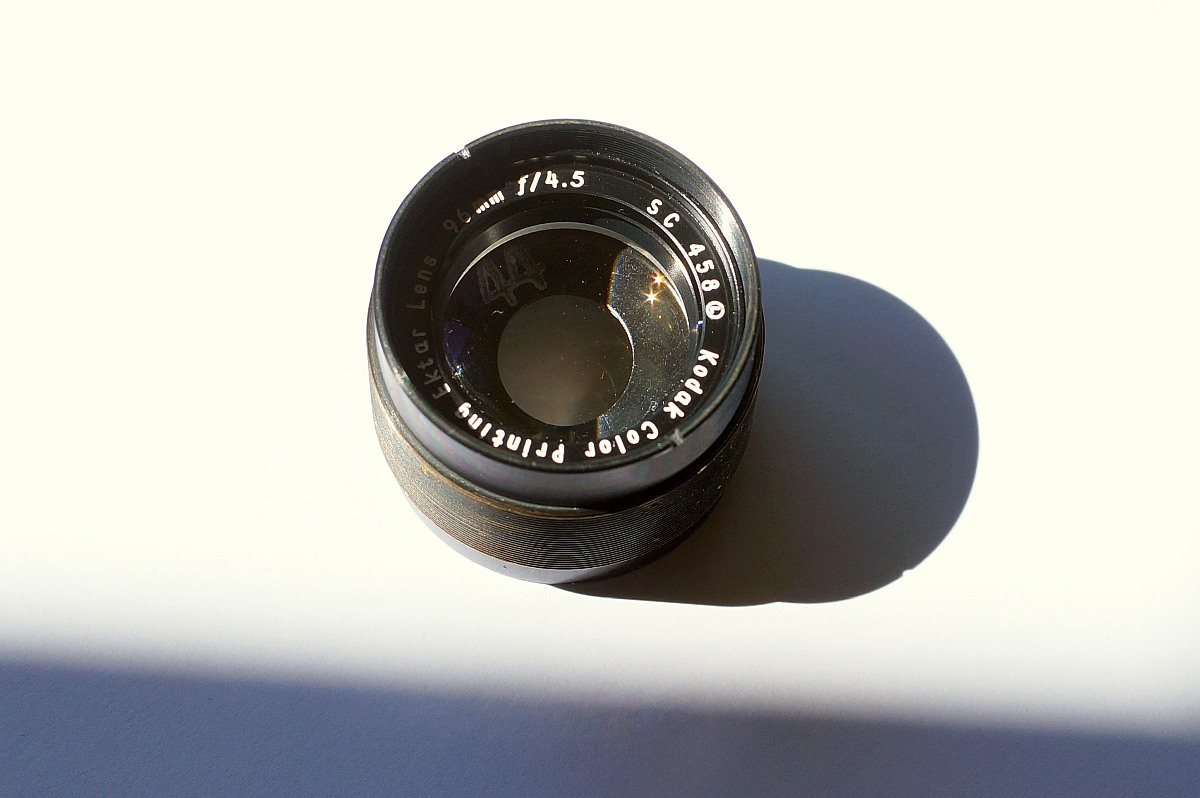
Without the disk
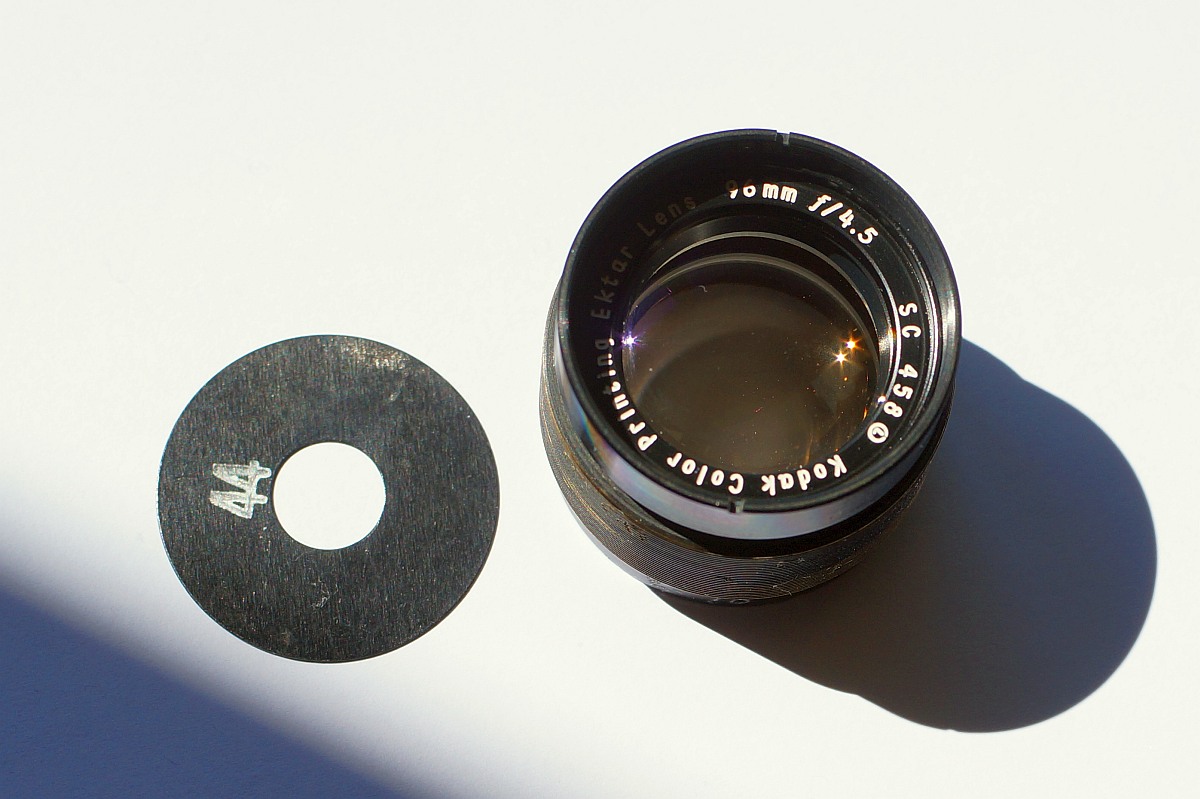
Without, a lens-through view
 |
|
| Back to top |
|
 |
alex ph

Joined: 16 Mar 2013
Posts: 1674
|
 Posted: Mon Aug 26, 2019 1:44 pm Post subject: Posted: Mon Aug 26, 2019 1:44 pm Post subject: |
 |
|
alex ph wrote:
And here are some more test shots in close field, as suggested by Ernst. I was glad to find difficult light conditions, the lens properties are in some way better observable.
#1 Without the inner aperture disk on Sony A7

#2 With the inner 44 disk on Sony A7
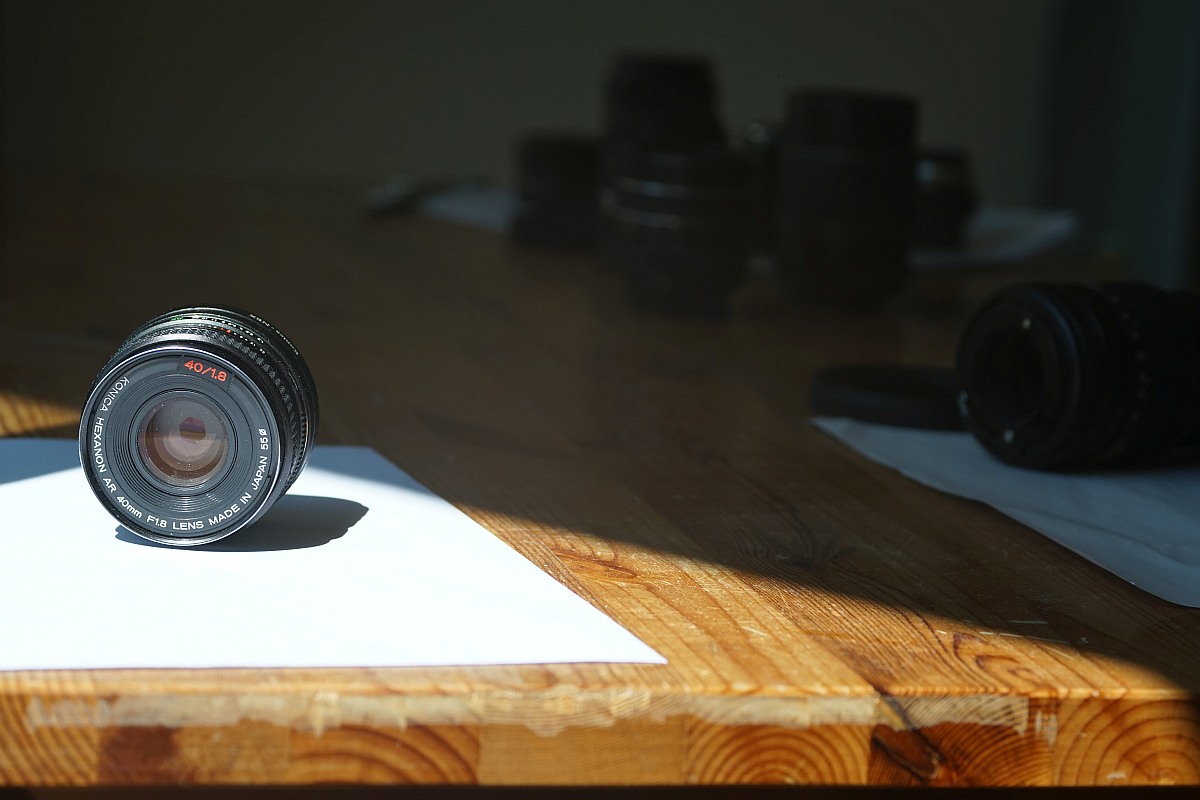
#3 Without the inner aperture disk on Sony Nex

#4 With the inner aperture disk on Sony Nex
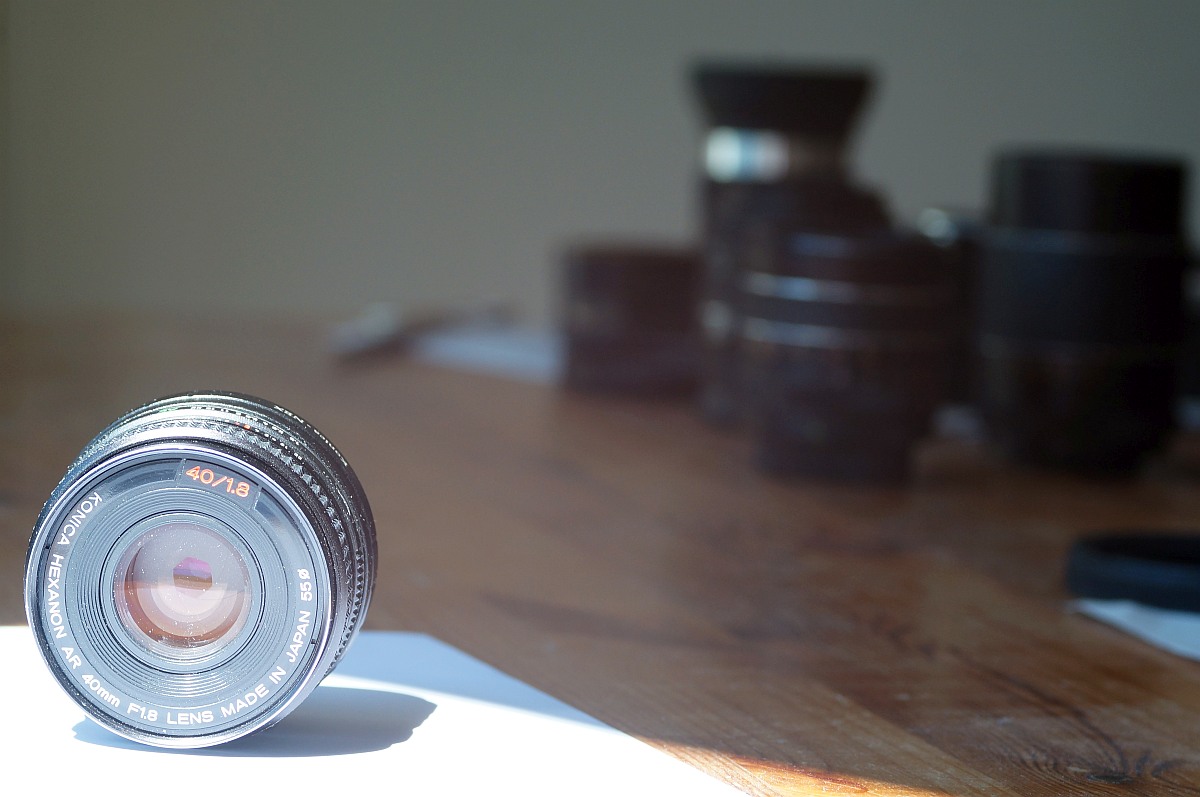
In both cases the difference visible in large distance shots is predictably confirmed, wide open the lens shows more CA and glow.
Just to have a scale for comparison, here is the same scene taken on Nex with Meyer Helioplan 4.5/75 (uncoated) wide open
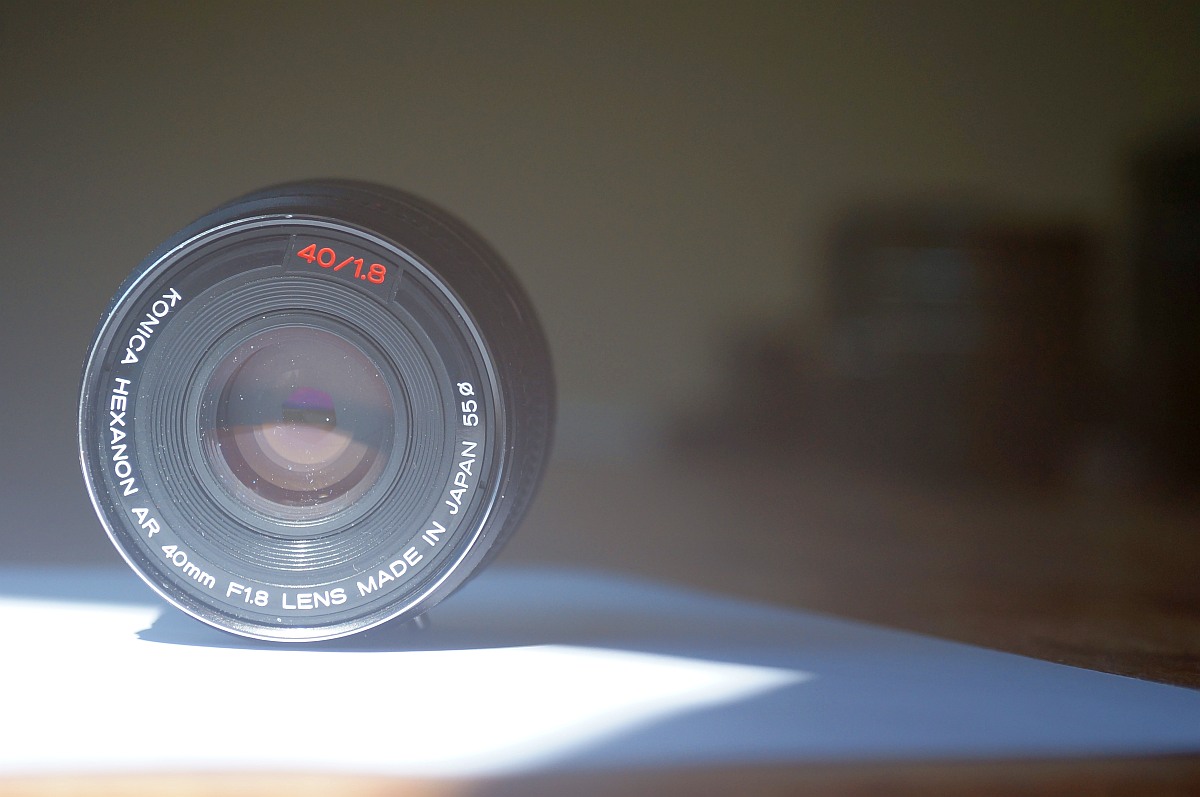 |
|
| Back to top |
|
 |
alex ph

Joined: 16 Mar 2013
Posts: 1674
|
 Posted: Mon Aug 26, 2019 2:21 pm Post subject: Posted: Mon Aug 26, 2019 2:21 pm Post subject: |
 |
|
alex ph wrote:
The final test which does not fit a usual set of comparisons. Although seeing the easiness of unscrewing the front group and eventually changing the inner fixed aperture disk, it seemed to me a curious one.
I asked myself what is the margin of tolerance for inter-glass distances of such a lens that might be easily unscrewed and recomposed. What if someone does not "close" the lens well enough? Does it impact dramatically its performance? And, accidents apart, might it be used for purpose, as in some old brass lenses, to make for example soft effect?
Here is a test answer. First of all, the test scene on the whole, taken with Nex

And here is a line of 100% crops I took from the upper left corner, without post-processing, as the center part of the image does not show that visible difference.

Click on the image to see it full size.
To tell the truth, the results are rather puzzling for me. First, it seems to be more about colour abberations than sharpness. Then, unscrewing the front group almost fully, I got a better result than unscrewing it at half. How does it expalin? And what should be done to the lens to get a clearer soft-effect? Anyway, it is quite a fun to tease the lens in such way. It gives more open questions than predictable results. |
|
| Back to top |
|
 |
Ernst Dinkla

Joined: 30 Nov 2016
Posts: 408
|
 Posted: Tue Aug 27, 2019 7:39 am Post subject: Posted: Tue Aug 27, 2019 7:39 am Post subject: |
 |
|
Ernst Dinkla wrote:
Possibly coincidence but a recent similar thread on adjusting element distances of enlarger lenses for infinity is here; https://www.dpreview.com/forums/post/63025308
I suspect in your case, widening the space between elements may have have flattened the focal field for longer distances.
_________________
Met vriendelijke groet, Ernst
http://www.pigment-print.com/spectralplots/spectrumviz_1.htm
March 2017 update, 750+ inkjet media white spectral plots |
|
| Back to top |
|
 |
alex ph

Joined: 16 Mar 2013
Posts: 1674
|
 Posted: Tue Aug 27, 2019 10:14 pm Post subject: Posted: Tue Aug 27, 2019 10:14 pm Post subject: |
 |
|
alex ph wrote:
What a coincidence, Ernst! Thank you for the link. I haven't seen this thread. Besides there is a thread on this forum about enlarger lenses at infinity that I equally ignored. Even though I never experimented an "awful" IQ with enlarger lenses at long distance close to infinity. But this might be because I have never got my hand on EL Nikkor...
If I understand right your idea on dpreview forum, you suppose that recessing the front group may flatten the optical field of the lens. My experiment goes in the contrary direction: I unscrewed the front group, so that it goes further from the focal plane. Besides my result is not consistent, as the last test series testimony: putting the front group further turns the image quality better, i.e. closer to the "normal" glass position, other than unscrewing just slightly. Maybe to get a more consistent result I need simply to repeat the test a couple times more. |
|
| Back to top |
|
 |
Ernst Dinkla

Joined: 30 Nov 2016
Posts: 408
|
 Posted: Wed Aug 28, 2019 9:56 am Post subject: Posted: Wed Aug 28, 2019 9:56 am Post subject: |
 |
|
Ernst Dinkla wrote:
| alex ph wrote: |
What a coincidence, Ernst! Thank you for the link. I haven't seen this thread. Besides there is a thread on this forum about enlarger lenses at infinity that I equally ignored. Even though I never experimented an "awful" IQ with enlarger lenses at long distance close to infinity. But this might be because I have never got my hand on EL Nikkor...
If I understand right your idea on dpreview forum, you suppose that recessing the front group may flatten the optical field of the lens. My experiment goes in the contrary direction: I unscrewed the front group, so that it goes further from the focal plane. Besides my result is not consistent, as the last test series testimony: putting the front group further turns the image quality better, i.e. closer to the "normal" glass position, other than unscrewing just slightly. Maybe to get a more consistent result I need simply to repeat the test a couple times more. |
I did read that thread some days ago. Should have mentioned it.
Well it is more that I expect for Tessars and Triplets designed for close up distances that they might be improved for longer distances when the front element is brought closer to the other elements. In analogy to front cell focusing Tessars and Triplets. How much is needed might be found in front cell focusing lenses of similar focal length. Going by this discussion https://www.photo.net/discuss/threads/front-cell-focusing-optimal-distance-setting.58647/ front cell focusing lenses are designed that the optimal quality is reached at 40x the focal length, say for the Kodak Anastigmat Special 101mm 4.5 that I have at 4.04 meter, about 13.5 feet. So if I would use it in a unit focusing system with a separate helicoid, I better set the front cell at that distance first. Then focus a target at that distance and make several takes with minimal changes at the front cell + focusing to see what the best quality is. Fix front cell and check the lens at other distances.
That is the opposite thing of what you might do (and I have in mind for some enlarging lenses), find what changes at the front cell are needed to use it for longer distances like infinity. My bet is reducing the distance between aperture and the front cell. That may not be easy given the barrel design.
BTW the lens you have is a Heliar design, 5 elements, 3 groups, but related to the Tessar design.
_________________
Met vriendelijke groet, Ernst
http://www.pigment-print.com/spectralplots/spectrumviz_1.htm
March 2017 update, 750+ inkjet media white spectral plots |
|
| Back to top |
|
 |
alex ph

Joined: 16 Mar 2013
Posts: 1674
|
 Posted: Thu Aug 29, 2019 11:09 pm Post subject: Posted: Thu Aug 29, 2019 11:09 pm Post subject: |
 |
|
alex ph wrote:
Ernst, interesting information and reflections! I will experiment more with unscrewing, unfortunately not in the sense you suggest, as it requires lathe work on the barrel. If you do some experiments with your lenses, please share the results.
I remember having crossed some sources about this lens, some saying Heliar type, some others Tessar. In the final count I made a conclusion that it is most probably the Tessar one. |
|
| Back to top |
|
 |
|
|
